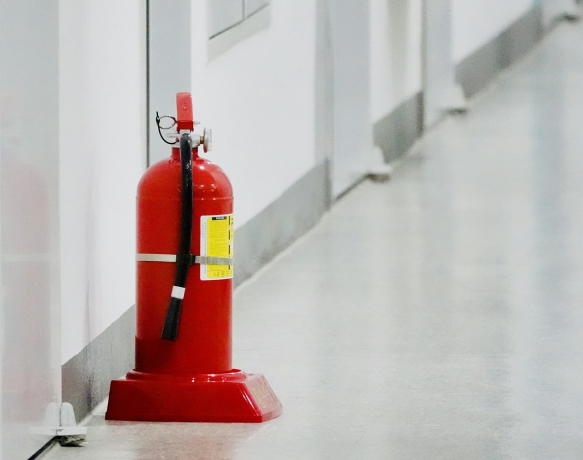In the contemporary workplace, maintaining a secure environment is a paramount concern for employers and employees alike. At the heart of this safety arsenal lies the humble yet mighty fire extinguisher, a crucial tool in combating fires and preventing potential catastrophes. This comprehensive article aims to underscore the importance of fire extinguishers in workplace safety, guiding you through selecting the right equipment, understanding the significance of professional guidance, and highlighting the necessity of regular maintenance and training.
The Lifesaving Power of Fire Extinguishers
A Pillar of Fire Safety
Fire extinguishers are not merely tools; they are integral to a comprehensive fire safety strategy, acting as the initial response to small outbreaks that could potentially evolve into devastating infernos. Their presence is a reassurance to employees, providing a tangible means of protection and enhancing the overall safety culture within the workplace.
Diverse Fires Demand Diverse Solutions
The effectiveness of a fire extinguisher hinges on its compatibility with the fire it's meant to combat. Fires are categorized based on their fuel sources, such as electrical appliances, flammable liquids, or ordinary combustibles like paper and wood. Each category requires a specific extinguisher type, making the selection process a critical aspect of fire safety planning.
Choosing the Right Fire Extinguisher for Your Workplace
Navigating the Hazards
Selecting the appropriate fire extinguisher requires a nuanced understanding of the workplace's specific fire hazards. For example, environments filled with electronic equipment need CO2 extinguishers, which can put out electrical fires without causing additional damage. This decision-making process is far from arbitrary and demands careful consideration of the potential risks.
The Role of Expertise
Expert consultation is indispensable in this context. Fire safety professionals can assess your workplace to recommend a customized solution that addresses your specific needs. This tailored approach not only ensures regulatory compliance but also significantly enhances your readiness to deal with emergencies.
The Imperative of Regular Maintenance and Training
Keeping Extinguishers at the Ready
The journey towards fire safety doesn't end with the installation of extinguishers. Their ongoing effectiveness is contingent upon regular maintenance. This includes periodic inspections, servicing according to manufacturer guidelines, and timely replacement of units that have exceeded their lifespan.
Training: The Human Element
Equipping your workforce with the knowledge and skills to use fire extinguishers effectively is just as important as the hardware itself. Training empowers employees, turning them into competent responders who can make a real difference in an emergency. This aspect of fire safety, often facilitated by fire equipment suppliers, is vital for ensuring that when the time comes, action can be taken swiftly and confidently.
In-Depth: Understanding Fire Extinguisher Types and Uses
A Closer Look at Classes and Corresponding Extinguishers
- Class A: For combustibles like wood and paper, water or foam extinguishers are effective.
- Class B: Designed for flammable liquids, CO2, and dry chemical extinguishers can prevent the spread of fire.
- Class C: Electrical fires require non-conductive extinguishing agents found in CO2 and dry chemical extinguishers.
- Class D: For combustible metals, specialized dry powder extinguishers are necessary.
- Class K: In kitchens, wet chemical extinguishers are designed to combat cooking oil fires.
Understanding these classes and their appropriate extinguishers is fundamental to preparing your workplace against a variety of fire incidents.
A Commitment to Fire Safety
The integration of fire extinguishers into workplace safety protocols is a critical measure that cannot be overlooked. By meticulously selecting suitable extinguishers, ensuring their maintenance, and investing in employee training, businesses can significantly mitigate the risks associated with fires. Collaborating with seasoned fire equipment suppliers facilitates access to quality products, expert advice, and comprehensive support services that collectively enhance workplace safety and preparedness.
The emphasis on fire extinguisher readiness and employee training underscores a broader commitment to creating a culture of safety where proactive measures are valued and implemented. In this environment, fire extinguishers stand as both literal and symbolic guardians against the threat of fire, embodying the organization's dedication to protecting its most valuable asset: its people. By fostering this culture of preparedness and responsibility, businesses not only comply with regulations but also affirm their commitment to the well-being of everyone under their roof.






